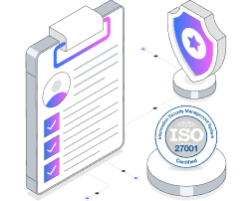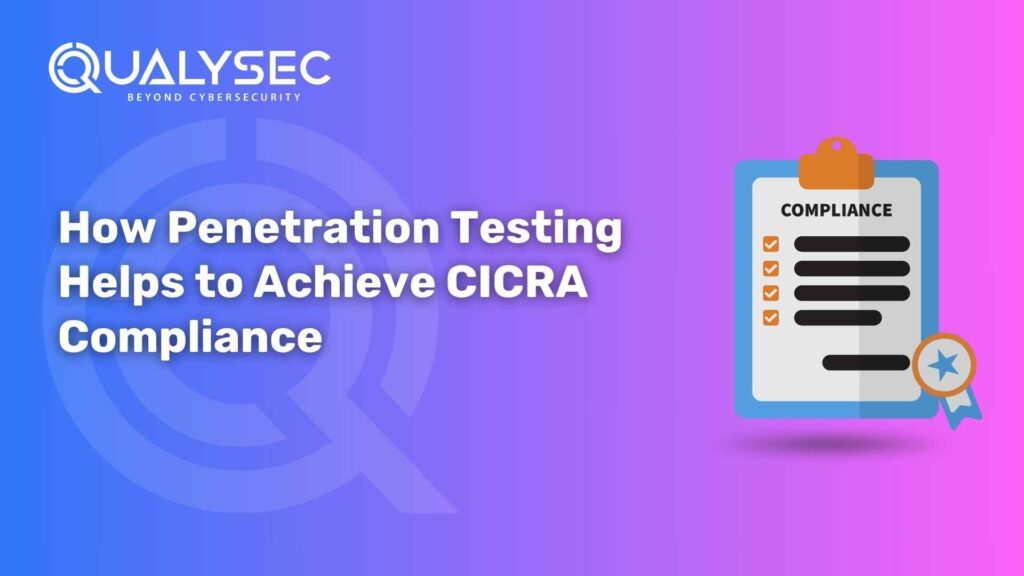How Penetration Testing Helps to Achieve CICRA Compliance
Credit card payments, housing loans, and industrial credit in India are growing at double-digit rates. As this rapid expansion has come, the need to protect sensitive credit information is more urgent than ever. To fulfill this need, the Government enacted the Credit Information Companies (Regulation) Act, 2005 (CICRA), creating a strong legal and regulatory framework for the operationalization of CIC, credit institutions, and other specified users. Not only is CICRA compliance a statutory obligation, but it also constitutes a very important move towards protecting consumer trust and the reputation of the institution itself. Penetration testing for CICRA compliance is among the best tools for ensuring that CICRA’s requirements are met. Qualysec Technologies is here to explain why penetration testing is required to attain CICRA compliance, the regulatory requirements, and also indicate how we can help your business acquire and maintain compliance. Understanding CICRA Compliance What is CICRA? CICRA stands for the Credit Information Companies (Regulation) Act, 2005. The Government of India introduced CICRA to regulate the functioning of data collection, maintenance, and dissemination of credit information. Comprehensive guidelines have been laid under both the Act and the Credit Information Companies Rules and Regulations of 2006 for – All organizations involved in handling credit information, i.e., banks, NBFCs, and other financial institutions, have to be CICRA compliant. These regulations are enforced by the Reserve Bank of India (RBI) Why is CICRA Important? The Role of Penetration Testing for CICRA Compliance What is Penetration Testing? Pen testing, also known as penetration testing, is a simulated cyber attack conducted by security professionals to uncover vulnerabilities in an organization’s digital infrastructure. Penetration testing is different from an automated vulnerability scan because the pen tests will involve manual techniques and creative attack strategies, just like how attackers perform their attacks in the real world. Key Objectives of Penetration Testing: What Does Compliance Require of Penetration Testing? CICRA mandates robust data protection, privacy, and security controls for all entities handling credit information. In several ways, Penetration testing for CICRA compliance can be instrumental for these requirements: Assessing Data Handling Practices Organisations need to follow strict data protection measures mandated by CICRA compliance. Penetration testing will make sure sensitive credit information is properly protected when it is collected, stored, processed, and transmitted. In the test phase, the exploits try to find the flaws in data flow, encryption, and access controls to make sure that data is not shown to unauthorized users. Validating Security Controls As a result, CICRA and the associated rule require technical and organizational controls in order to prevent data breaches and unauthorized disclosure. The controls, including things such as firewalls, intrusion detection systems, and authentication mechanisms, are rigorously challenged through penetration testing to determine whether they withstand such attacks. Complying with Auditors and Regulators A penetration testing report from a company like Qualysec is a sound proof of proactive security measures that can be used as documented evidence. Based on these reports, vulnerabilities, severity, and remediation steps are critical during CICRA audit and RBI-appointed auditors’ inspections. Continuous Security Improvement Compliance with CICRA is not a one-time phenomenon but a process that might continue indefinitely. The more regular penetration testing, the better it allows an organization to stay ahead of ever-changing threats, evolve with technology, and ensure there is a good security posture by meeting regulatory expectations. Reduction of Regulatory Penalties Risk Penetration testing identifies and abates the vulnerabilities prior to them being exploited. This prevents financial and credit damage resulting from the breach and regulatory sanctions. Need help with CICRA compliance? Get a free consultation with our experts today! Talk to our Cybersecurity Expert to discuss your specific needs and how we can help your business. Schedule a Call Qualysec’s Approach to Penetration Testing for CICRA Compliance Testing for security has to be rigorous, methodical, and transparent. A trusted partner to those companies looking to satisfy CICRA requirements, expert-led penetration testing is one of the key services provided by Qualysec Technologies. Qualysec’s approach guarantees that your business remains compliant and secure in this manner. Process-Based, Industry-Standard Methodology Global Standards Alignment – Qualysec adheres to the Global standards. That way, we make sure every penetration test will meet the stringent rigors requested by the regulators and accepted in all jurisdictions. Qualysec Approach – Taking the Hybrid Testing approach of combining automated tools with manual testing, hence able to provide a deep and effective security assessment even for those vulnerabilities that automated scans cannot detect well enough. Comprehensive Scoping and Planning Scoping – Qualysec, due to its close working relationship with clients, tailors the scope solidly to cover those critical assets, applications, and networks that handle credit information as necessary according to the CICRA. Definition – Identifying return on investment (ROI), types of clients, engagement processes, and communication strategies. Transparent and Collaborative Testing Transparency – Qualysec provides us with open communication, starting from testing and interacting with client teams to keep them updated about what is going on at every stage. Collaboration – Get up-to-date information on findings, so remedial actions can be taken quickly and business disruption is reduced. Rigorous Quality Assurance Real Methods – As part of its penetration tests, Qualysec’s tests span various network, application, and infrastructure layers, mirroring real attack scenarios in order to find vulnerabilities in the whole environment. Strict Quality Control – All the findings undergo a special review, where all aspects are checked to ensure accuracy, as well as reliability for robust governance, risk, and compliance (GRC) validation. Detailed Reporting and Remediation Guidance Comprehensive Reports – Give you clear, actionable reports that categorize vulnerabilities based on severity (critical, high, medium, low, minimal) using global standards. Both the technical team and the auditors will find these reports to supply technical details, business impact, and remediation steps on what can be done about it. Support – Reporting alone is not sufficient to address vulnerabilities or to improve your security posture. Hence, we provide remediation support. Qualysec brings with it expert guidance to organizations to do so.




